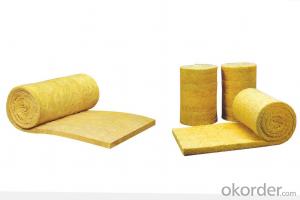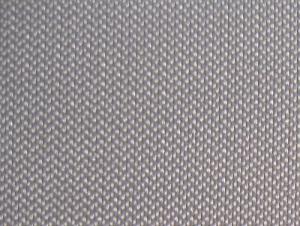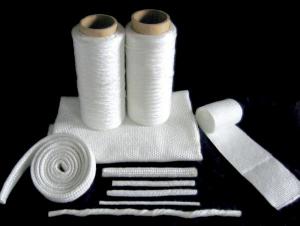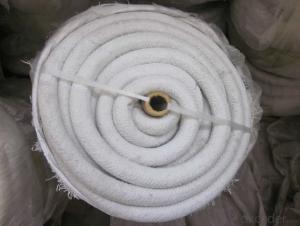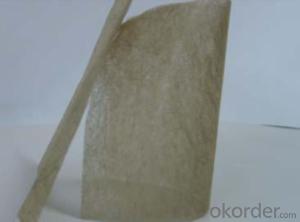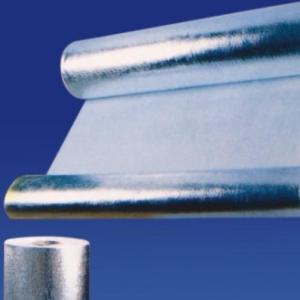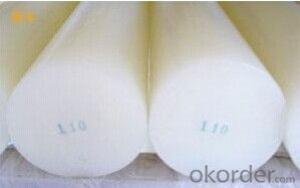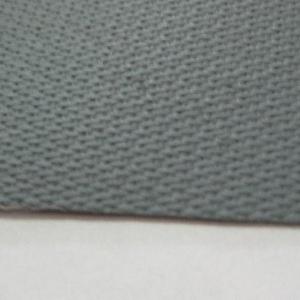Glass Fiber Thermal Insulation Wool Blankets
- Loading Port:
- Qingdao
- Payment Terms:
- TT OR LC
- Min Order Qty:
- 5000 m.t.
- Supply Capability:
- 10000 m.t./month
OKorder Service Pledge
OKorder Financial Service
You Might Also Like
Specifications
1.cheap wool blankets
2.Sound absorption and noise reduction
3.Easy for construction
4.Grade A1 fireproof
Advantages and features about glass fiber thermal insulation cheap wool blankets in china
1. excellent thermal insulation--very low thermal conductivity coefficients
2. excellent acoustic insulation--can reduce noise and sound transmitting
3. non-corrisive, durable
4. moisture resistant, fire resistant
5. good strength to resist deformation
Item | glass fiber thermal insulation cheap wool blankets in china |
Material | Main raw material: glass |
Application | Wall inslation, ceiling, roofing, heat insulation, iron air conduct, building and construction project, air conditioner, refrigeration equipment, damping, sound absorption and noise reduction, boilers, reaction vessels, tanks, ducts, high temperature workshop and chemical industries, so on. |
Size | Volume weight: 10-72 kg/m3 Thickness: 25-100mm Length: 3-20m Width: 1200mm |
Highest Usage Temperature | 450C |
Heat Conduct Coefficient | 0.045-0.032 W/mk |
Hydrophobic | >98.5 |
Incombustibility | Qualified Grade A |
Color | Yellow, White, Pink |
Packing | Chinese standard vacuumized woven bag or as your design |
Delivery time | Within 3-7 days |
Port of loading | China main port |
- Q:Can glass fiber textiles be knitted?
- Yes, glass fiber textiles can be knitted.
- Q:What are the advantages of using glass fiber textiles over other materials?
- Glass fiber textiles have numerous advantages compared to other materials. Firstly, their exceptional strength and durability are well-known. Glass fibers possess inherent properties, such as high tensile strength and resistance to breaking or stretching, that make them suitable for various applications. This strength enables glass fiber textiles to endure heavy loads and harsh environments, ensuring their reliability and longevity. Secondly, glass fiber textiles exhibit excellent heat resistance. Unlike many other materials, they can withstand high temperatures without compromising their structural integrity. This characteristic makes them suitable for applications requiring heat insulation or fire resistance, such as the construction of fireproof clothing, insulation materials, or protective gear. Another advantage of glass fiber textiles is their outstanding chemical resistance. They do not react with most chemicals, acids, and alkalis. This makes them ideal for industries where exposure to corrosive substances is common, such as the chemical or petrochemical industry. Moreover, their resistance to moisture and mold growth makes them suitable for applications in damp or humid environments. Furthermore, glass fiber textiles are lightweight and have a high strength-to-weight ratio. This feature makes them an appealing choice in industries where weight reduction is crucial, such as aerospace or automotive. The lightweight nature of glass fiber textiles also facilitates easy handling and installation, which reduces labor costs and enhances efficiency. Lastly, glass fiber textiles offer high versatility and can be easily customized to meet specific requirements. They can be woven, knitted, or braided into various forms, allowing flexibility in design and application. Additionally, glass fiber textiles can be coated or combined with other materials to enhance specific properties, such as adding abrasion resistance or improving electrical conductivity. In conclusion, the advantages of glass fiber textiles over other materials encompass exceptional strength and durability, excellent heat and chemical resistance, lightweight nature, and versatility. These properties establish glass fiber textiles as the preferred choice in a wide range of industries, including construction, automotive, aerospace, and chemical manufacturing.
- Q:Can glass fiber textiles be used for making insulation blankets or wraps?
- Yes, glass fiber textiles can be used for making insulation blankets or wraps. Glass fiber textiles have excellent thermal insulation properties and are commonly used in various industries for insulation purposes. They provide effective heat resistance, as they are made from fine glass fibers that trap air and reduce heat transfer. Glass fiber insulation blankets or wraps can be used to insulate pipes, ducts, tanks, and other equipment to prevent heat loss or gain. They are also resistant to moisture and can provide acoustic insulation. Additionally, glass fiber textiles are lightweight, flexible, and durable, making them suitable for various insulation applications. However, it is important to handle glass fiber textiles with care, as they can cause irritation to the skin, eyes, and respiratory system if not properly protected.
- Q:Are glass fiber textiles resistant to rot and decay?
- Yes, glass fiber textiles are highly resistant to rot and decay. Unlike natural fibers such as cotton or wool, which are susceptible to microbial attacks and decomposition, glass fiber textiles are inorganic and do not provide a suitable environment for bacteria, fungi, or other microorganisms to thrive. This resistance to rot and decay makes glass fiber textiles a durable and long-lasting material option for various applications, including reinforcement in composites, insulation, and protective clothing. Additionally, glass fiber textiles are also resistant to moisture, chemicals, and UV radiation, further enhancing their longevity and performance in different environments.
- Q:Can glass fiber textiles be felted?
- No, glass fiber textiles cannot be felted. Felt is a fabric made by matting, condensing, and pressing fibers together. It is typically made from animal fibers such as wool, which have natural scales that interlock when subjected to heat, moisture, and pressure. Glass fibers, on the other hand, are made from molten glass that is drawn into thin strands. These fibers do not have the same properties as animal fibers and therefore cannot be felted.
- Q:How are glass fiber textiles used in the aerospace industry?
- Due to their exceptional properties and versatility, glass fiber textiles are extensively utilized in the aerospace industry. These textiles, composed of fine strands of glass, possess remarkable attributes such as high strength-to-weight ratio, corrosion resistance, and exceptional thermal and electrical insulation. Within the aerospace industry, glass fiber textiles have diverse applications. One primary application involves their integration with resins to manufacture composite materials, resulting in the creation of sturdy and lightweight structures. These composites are crucial for constructing key aircraft components like wings, fuselages, and tail sections. By incorporating glass fiber textiles, the overall strength and stiffness of these structures are enhanced, leading to improved load distribution and enhanced fuel efficiency. Moreover, glass fiber textiles are valuable in producing thermal and acoustic insulation materials for aerospace purposes. These textiles effectively regulate temperature within the aircraft, affording protection to critical components against extreme heat or cold. Additionally, they contribute to reducing noise levels by absorbing and dampening sound waves, consequently providing a quieter and more comfortable flying experience. Additionally, glass fiber textiles are utilized in the fabrication of protective covers and shields for sensitive equipment and instruments employed in the aerospace industry. These textiles serve as lightweight yet durable barriers against environmental factors including electromagnetic interference, radiation, and moisture. By safeguarding critical electronic components, they ensure proper functionality and longevity. In summary, glass fiber textiles play a pivotal role in the aerospace industry, enabling the production of robust, lightweight, and high-performance materials. Their utilization in composites, insulation, and protective applications significantly enhances the safety, efficiency, and reliability of aircraft, thus making them an indispensable component of modern aerospace technology.
- Q:How does glass fiber textile perform in terms of sound absorption?
- Glass fiber textile exhibits excellent performance in terms of sound absorption. Its unique structure and composition enable it to effectively trap and diminish sound waves, thus reducing echo and reverberation within a given area. The compactly arranged fibers of this textile possess a large surface area, which contributes to its ability to absorb a wide range of frequencies, including those in the low, mid, and high ranges. Consequently, it is an appropriate material for soundproofing purposes in diverse settings, ranging from recording studios and concert halls to theaters, residential areas, and commercial spaces. Furthermore, glass fiber textile is both fire-resistant and durable, rendering it a dependable option for long-term sound absorption requirements.
- Q:How do glass fiber textiles resist moisture?
- Moisture resistance in glass fiber textiles is a result of the material's inherent properties. Glass fibers, created by spinning molten glass into thin strands and weaving them together, do not absorb moisture like cotton or wool. Instead, they repel water and resist moisture absorption. This resistance is due to the non-porous nature of glass fibers. Their smooth surface prevents water molecules from penetrating the material, making them highly resistant to moisture. This characteristic is especially advantageous for outdoor fabrics, boat covers, and shower curtains, where moisture resistance is crucial. In addition, glass fibers are also resistant to mold and mildew, which are common issues in damp environments. Unlike organic materials, glass fibers do not provide an environment conducive to mold and mildew growth, making them ideal for high humidity or damp conditions. To enhance their moisture resistance, glass fiber textiles can be treated with water-repellent coatings. These coatings create a hydrophobic barrier on the fabric's surface, further preventing water absorption and enhancing its overall water-resistant properties. In conclusion, glass fiber textiles resist moisture due to their non-porous nature, preventing water penetration. Their resistance to mold and mildew makes them suitable for use in moisture-prone environments.
- Q:Can glass fiber textile be used in tennis rackets?
- Tennis rackets can indeed utilize glass fiber textile. Commonly known as fiberglass, this material is frequently employed in the construction of tennis rackets. By weaving glass fibers into a fabric and incorporating it into the racket frame, enhanced strength and stability are achieved. Consequently, the racket becomes more durable and performs better, as it withstands intense gameplay without breaking or bending. Moreover, the utilization of glass fiber textile contributes to the racket's lightweight nature, enabling players to maneuver and swing effortlessly. All in all, due to its advantageous properties and ability to enhance the playing experience, glass fiber textile remains a popular choice for constructing tennis rackets.
- Q:What are the different bonding methods for glass fiber textile?
- Glass fiber textile can be bonded using various methods, each offering unique benefits and applications. 1. Adhesive bonding: In this approach, a specific adhesive is applied to the fabric and then cured to create a robust bond. Adhesive bonding is commonly employed in industries requiring flexibility and strength, such as sports equipment or automotive part manufacturing. 2. Heat bonding: Also known as thermal bonding, this method involves melting the fibers together using heat, resulting in a solid bond. Heat bonding is often used to join multiple layers of glass fiber fabric, creating a thicker and stronger material. It finds extensive use in the production of laminated glass fiber composites. 3. Stitch bonding: This technique employs stitching or sewing to bond the glass fibers. A needle and thread are used to sew the fibers together, creating a durable and sturdy bond. Stitch bonding is frequently utilized in applications where flexibility and breathability are essential, like clothing or upholstery manufacturing. 4. Weaving: This method interlaces the glass fibers, forming a fabric. The fibers are woven using a loom, crossing over and under each other to create a stable structure. Weaving is commonly employed in producing glass fiber textiles like fiberglass cloth or fiberglass tape. 5. Knitting: This technique involves interlocking loops of glass fibers to create a fabric. Knitting machines or hand knitting needles are used to form the loops, which are then secured together to produce a cohesive material. Knitting is often preferred for glass fiber garments or accessories due to its stretchiness and comfort. In summary, the bonding method chosen for glass fiber textiles depends on the specific requirements of the application, such as strength, flexibility, or breathability. Each method has its own advantages and limitations, and manufacturers select the most suitable approach based on the desired properties of the final product.
1. Manufacturer Overview |
|
|---|---|
| Location | |
| Year Established | |
| Annual Output Value | |
| Main Markets | |
| Company Certifications | |
2. Manufacturer Certificates |
|
|---|---|
| a) Certification Name | |
| Range | |
| Reference | |
| Validity Period | |
3. Manufacturer Capability |
|
|---|---|
| a)Trade Capacity | |
| Nearest Port | |
| Export Percentage | |
| No.of Employees in Trade Department | |
| Language Spoken: | |
| b)Factory Information | |
| Factory Size: | |
| No. of Production Lines | |
| Contract Manufacturing | |
| Product Price Range | |
Send your message to us
Glass Fiber Thermal Insulation Wool Blankets
- Loading Port:
- Qingdao
- Payment Terms:
- TT OR LC
- Min Order Qty:
- 5000 m.t.
- Supply Capability:
- 10000 m.t./month
OKorder Service Pledge
OKorder Financial Service
Similar products
New products
Hot products
Hot Searches
Related keywords
